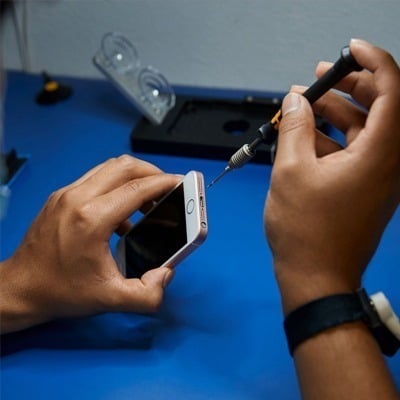
Despite enormous supply chain issues, Apple will sell a large number of items, primarily iPhones, this Christmas season. And some of those goods will get a cracked screen (or worse) over time. Is Apple’s recently announced self-service program right for you if your iPhone is out of warranty or not covered by AppleCare?
Apple’s upcoming Self Service initiative, which begins in early 2022, will finally provide individual users the opportunity to fix their iPhones themselves using official Apple OEM parts and documentation. Apple has stated that this functionality will eventually be extended to Macs.
While this sounds excellent in principle, there are many unanswered questions. Apple’s original press statement doesn’t go into much information about how the program will be implemented. Of course, if Apple sells the repair components reasonably and competitively (a major assumption), users who want to do their repairs might save money. Simultaneously, it would let conventional independent repair businesses stay competitive by employing “authentic” Apple components.
Today’s situation
Apple now restricts access to its factory OEM components for Macs and iPhones to several “Apple-approved” organizations. They include Apple Stores, Apple Independent Repair Providers (known as IRP), and Apple Authorized Service Providers (AASP). Apple’s new self-service program would be similar to what IRPs employ. Like, it would let customers use Apple components, guidelines, and equipment to solve typical out-of-warranty repair scenarios. Such as screen damage, battery replacement, and camera fixes. According to Apple, about 2,800 IRPs operate in more than 200 countries worldwide.
With this statement, Apple promotes itself as the go-to resource for customers looking for authentic parts and instructions According to the press announcement, “more than 200 unique components and tools” for iPhone 12 and 13 models will be available in early 2022. If Apple mandates the use of certain adhesives, specialized equipment, discharge mats, unique screws, and perhaps bespoke presses, the typical customer who seeks to repair a broken iPhone screen may face a costly undertaking.
To be fair, Apple states that customers who use the Self Service Repair Program will be reimbursed for the old component. However, the Cupertino-based Corporation has not stated how much money you may save by fixing your device. A screen repair utilizing Apple’s existing in-store service now costs $279, so it will be fascinating to absorb the actual economics once the firm releases the details of this initiative.
For some years, consumers have accepted (unauthorized) service providers for iPhone repairs since these businesses often employ after-market parts. However, this is a dangerous option to take because several Apple features (like its True Tone adaptive screen feature) may not function properly if third-party components are employed. The consumer appeal of this initiative will be determined by the costs that Apple finally decides to reveal.
Is this Apple’s Self-Serve Repair Program appropriate for you?
To take a step back, this initiative is a proactive response by Apple to the Federal Trade Commission’s (FTC) recent vow to combat illegal “right to repair” limitations. The “right to repair” campaign is gaining traction in Europe, much to the displeasure of smartphone makers (including Apple). They are concerned about subpar repairs and government-mandated programs that could prevent manufacturers from making crucial product design decisions. In that sense, Apple’s Self Service Repair offering is a proactive measure to avoid future FCC action.
Aside from that, if you have an earlier iPhone, this software will not help you. In general, most iPhones in need of repair are more than a couple of years old, putting them outside of Apple’s new program’s scope. Even if you have an iPhone 12 or 13, the economics of investing in the tools and materials that Apple will want you to utilize may not make sense until Apple reveals the program’s cost specifics. Even if the economics make sense and you have the necessary equipment and components, breaking the screen of an iPhone is not for the faint of heart.
Finally, I’m hopeful that Apple’s new Self Service repair program would allow small, do-it-yourself repair shops to conduct repairs more cheaply. By allowing them to charge lower prices, which would be a win for customers.
A few closing thoughts
The portion of this story that most fascinates me is how this move would affect Mac computers equipped with Apple’s M1 CPUs. For years, Apple Macs have been built with little or no internal upgradeability after purchase. Most Macs (particularly MacBooks) have memory and solid-state storage soldered to the motherboard, making internal alterations impossible.
Apple’s design philosophy has long been at odds with those of the major PC OEMs, notably Dell, who design their devices with post-sale upgradeability in mind. Great laptop design sometimes entails concessions to minimize after-sale upgradeability. Still, it’ll be interesting to see whether Apple’s new Self Service program allows users to conduct simple MacBook repairs, such as battery replacements.
At the smartphone level, Apple’s Self Service project is a significant change for the company, and I believe it will be well-implemented. Apple goods have always been designed to be long-lasting and durable without losing design appeal. The program’s impact will be impossible to determine until the entire costs are known early next year. However Apple appears to have realized that some people would desire to fix their smartphones for no other reason than convenience. That’s a positive step in the right direction.

